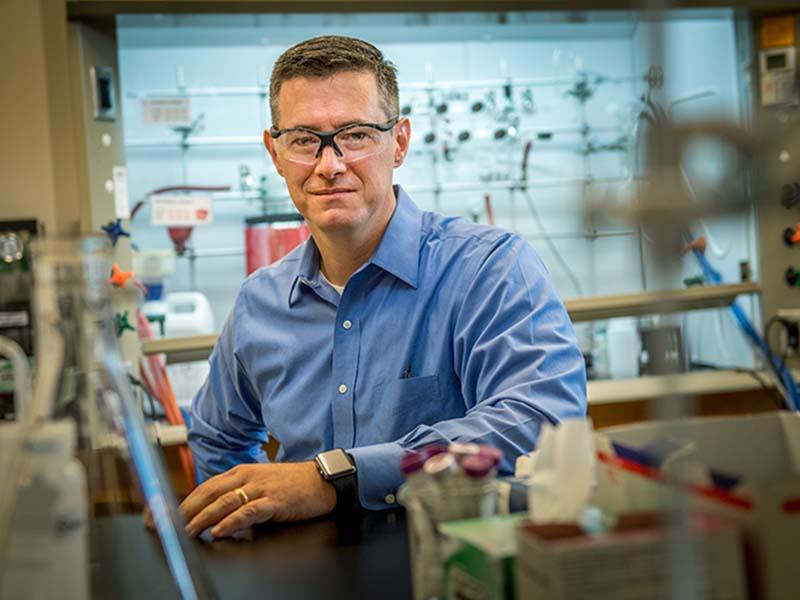Tulane lab looks to create 'dream reaction'
Tulane University’s Shantz Lab has received a two-year grant of $110,000 from the American Chemical Society’s (ACS) Petroleum Research Fund to find a solution to one of the chemical industry's most demanding transformations, the direct conversion of benzene to phenol.
Phenol is used to make numerous everyday items including plastics. The way it is made now is a complicated, energy-intensive, multi-step process. The direct conversion of benzene to phenol is viewed as a "dream reaction."
The ACS hopes to find a way to take benzene, a colorless and highly flammable liquid with a sweet smell, and convert it so that it reacts with oxygen from the air and directly makes phenol in a one-step process. The current industrial process takes three steps.
"The direct conversion of benzene to phenol with molecular oxygen is a long-standing problem and hailed as one of the ten hardest transformations in the chemical industry."
- Daniel Shantz
“The direct conversion of benzene to phenol with molecular oxygen is a long-standing problem and hailed as one of the ten hardest transformations in the chemical industry,” said Daniel Shantz, professor and the Entergy Chair of Clean Energy Engineering at Tulane. “This is a holy grail reaction. It’s a grand challenge because no one has been able to perform this chemistry under conditions that the industry would think about implementing.”
According to Shantz, having one reaction versus three makes the plant smaller and less expensive to build and operate. It should also require less energy, emit less carbon dioxide and lead to less waste.
“We have three to four, well-defined ideas that over the years of the grant we should be able to test. We are going to make nanomaterials, which are nearly a thousand times smaller than the diameter of a human hair. Some will be rods, cubes or spheres and the idea is that by changing their shape, we will be able to change the number of sites on the nanomaterial that will allow us, in one step, to react oxygen and benzene to make phenol in a way no one has been able to do so far,” Shantz said.

